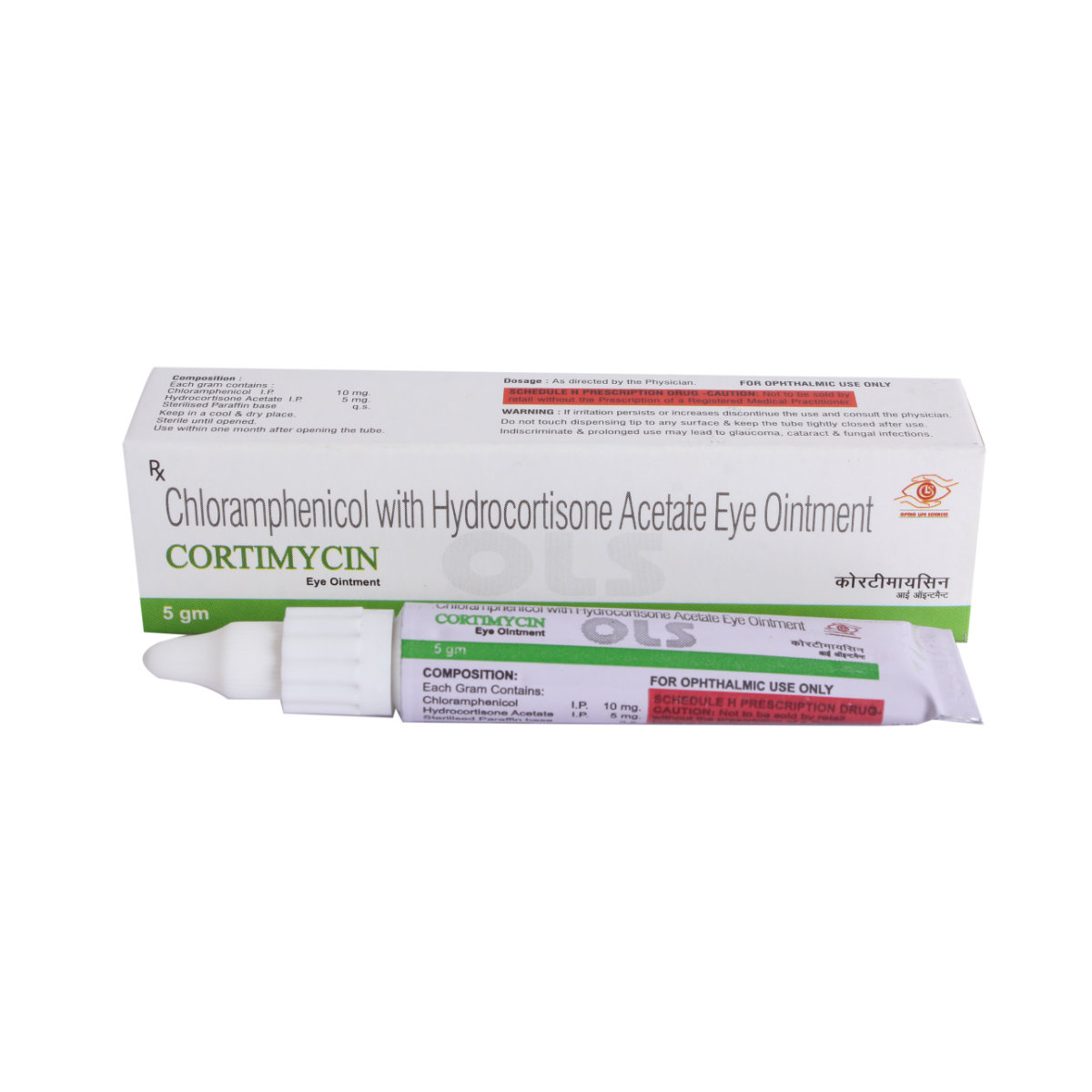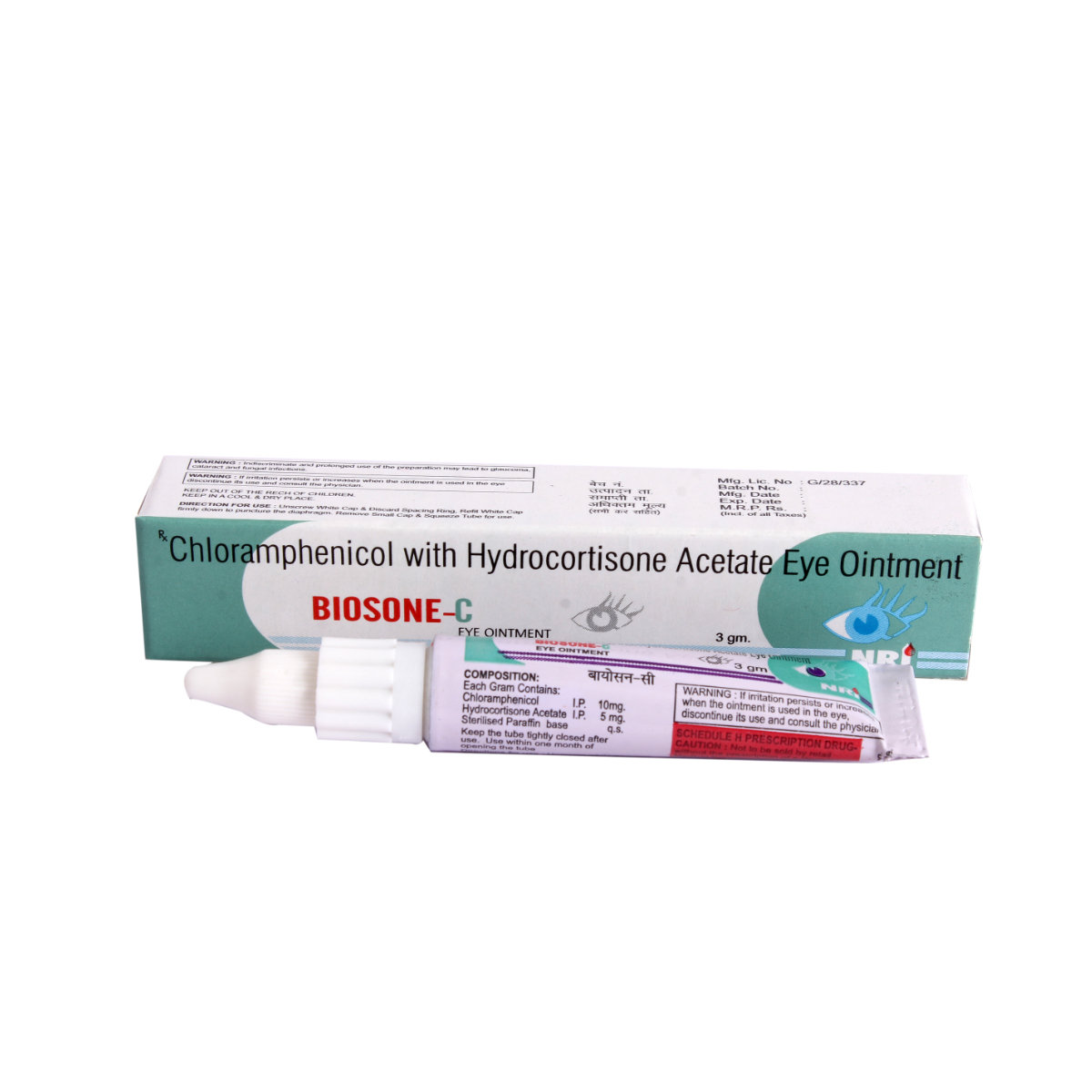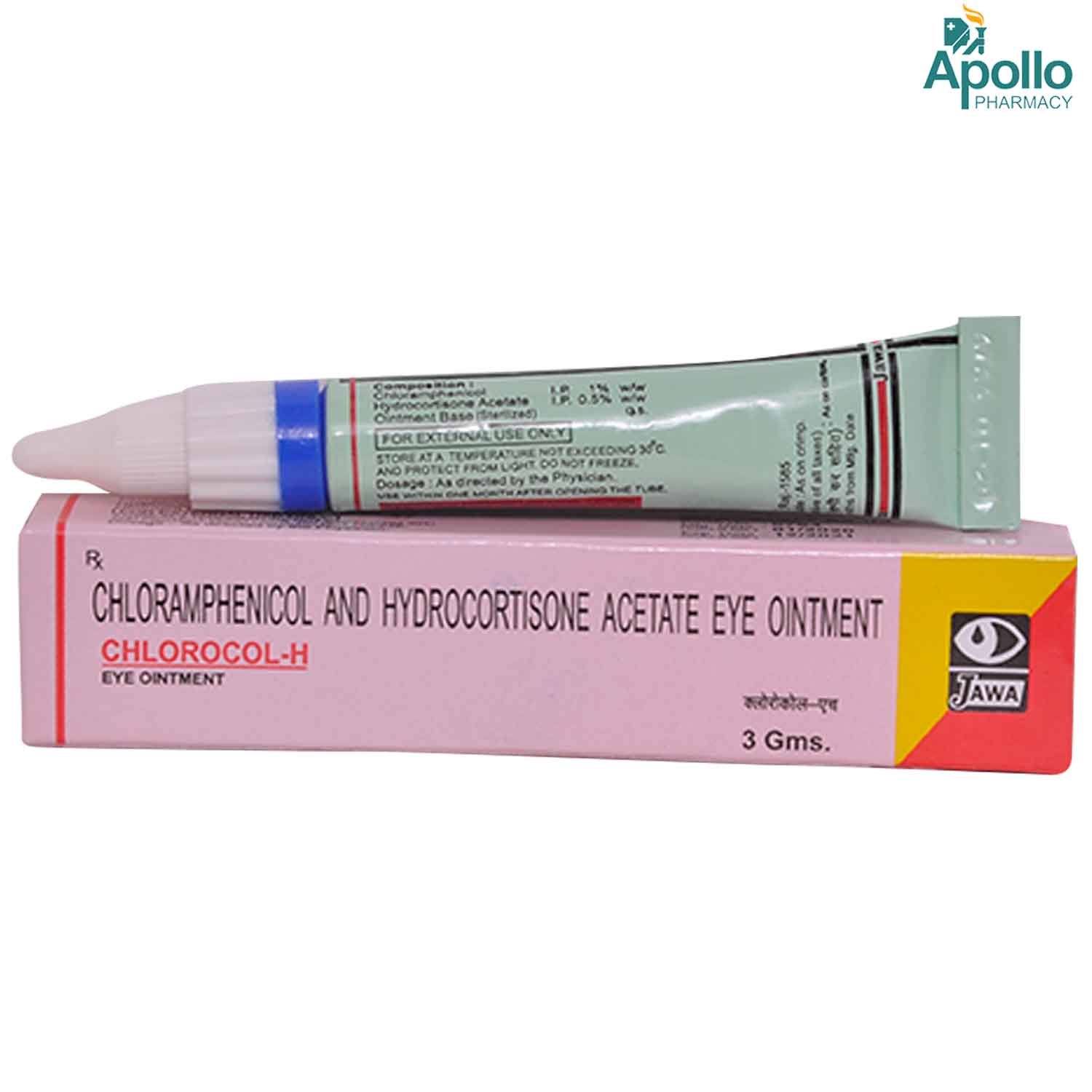Chlodor H Eye Ointment


MRP ₹45
(Inclusive of all Taxes)
₹6.8 Cashback (15%)
Provide Delivery Location
Online payment accepted
 Prescription drug
Prescription drugWhats That
Composition :
Manufacturer/Marketer :
Consume Type :
Return Policy :
About Chlodor H Eye Ointment
Chlodor H Eye Ointment belongs to a group of medicines called 'antibiotics' primarily used to treat eye bacterial infections (optic). It is used for treating infectious diseases of the eyelids, the cornea (the transparent part that covers the front part of the eye), conjunctiva ( lines the inner surfaces of the eyelids), and anterior ocular segment(front of the eye). Bacterial eye infection occurs when harmful bacteria enter any part of the eyeball or surrounding tissues, including the cornea ( front surface of the eye) and lining of the outer eye and inner eyelids (conjunctiva). The common symptoms of eye infections are red eyes, pain, discharge, watery eyes, dry eyes, light Sensitivity, swollen eyes, itching, and blurred vision.
Chlodor H Eye Ointment is a combination of two antibiotics: Hydrocortisone and Chloramphenicol. Hydrocortisone is a steroid medicine that works by calming down the body's immune response to decrease itching, pain, and swelling (inflammation) of the eye. Chloramphenicol is bacteriostatic, which prevents bacteria's growth by inhibiting the production of essential proteins necessary for bacteria to grow, multiply, and increase in numbers. Together as a combined product, Chlodor H Eye Ointment prevents the spread of eye infections caused by a wide range of gram-negative bacteria causing eye infections.
Use Chlodor H Eye Ointment as prescribed by your doctor. Chlodor H Eye Ointment is only for use in the eyes. Do not swallow or inject Chlodor H Eye Ointment. You are advised to use Chlodor H Eye Ointment for as long as your doctor has prescribed it for you based on your medical condition. In some cases, you may experience redness, itching, irritation, burning or stinging sensation in the eyes, blurred vision, Sensitivity to light, eyelid swelling, itching, or crusting. Most of these side effects of Chlodor H Eye Ointment do not require medical attention and gradually resolve over time. However, if the side effects worsen or persist, please consult your doctor.
Please tell your doctor if you are allergic to Chlodor H Eye Ointment or any other medicines. Chlodor H Eye Ointment should be used with caution in children. You are advised to consult a doctor if you are pregnant or breastfeeding. You are recommended not to use contact lenses during the course of Chlodor H Eye Ointment as it may worsen the infection. If you get any new eye problem, an eye infection, or notice any allergic reactions such as itching or redness of the eye and skin rash, please consult your doctor immediately. You are advised to maintain a 10 minutes time gap between using Chlodor H Eye Ointment and other eye drops. Please do not touch the container tip to the eye, eyelids, or surrounding areas as it may contaminate the Chlodor H Eye Ointment and cause eye infections.
Uses of Chlodor H Eye Ointment
Directions for Use
Key Benefits
Chlodor H Eye Ointment is a combination of two antibiotics: Hydrocortisone and Chloramphenicol. Hydrocortisone is a steroid medicine that works by calming down the body's immune response to decrease itching, pain, and swelling (inflammation) of the eye. Chloramphenicol is bacteriostatic, which prevents bacteria's growth by inhibiting the production of essential proteins necessary for bacteria to grow, multiply, and increase numbers. Together as a combined product, Chlodor H Eye Ointment prevents the spread of eye infections caused by a wide range of gram-negative bacteria causing eye infections.
Storage
Drug Warnings
Chlodor H Eye Ointment should not be used for an eye infection due to a virus, or another type of eye infection (e.g., tuberculosis, fungus), without consulting with the doctor. After applying Chlodor H Eye Ointment, your vision becomes blurred for some time, so you are advised not to drive or use any machine or activity that needs a clear vision. Long-time use of Chlodor H Eye Ointment can enhance the risk of e intraocular pressure (glaucoma) that can even damage the optic nerve and cause visual defects. Therefore, regular eye checkups are advised to monitor intraocular pressure. Chlodor H Eye Ointment contains s benzalkonium chloride as an excipient that may discolour soft lenses, so try to avoid soft lenses for at least some time after using Chlodor H Eye Ointment.
Diet & Lifestyle Advise
- Wash your hands with soap and water frequently.
- Keep your clothes, towels, and bedsheets separate from others.
- Maintain good hygiene of contact lenses. Wash your hands thoroughly before wearing and after removing contact lenses.
- Avoid wearing contact lenses while swimming. In case you use them mistakenly, get a new pair.
- Wear protective eye gear if you are cycling or trekking through the forest.
- If you have irritation in the eyes, avoid rubbing them.
Side Effects of Chlodor H Eye Ointment
- Redness in eyes
- Itching eyes
- Irritation, burning, or stinging sensation in the eyes
- Blurred vision
- Increased sensitivity to light
- Eyelid swelling
Habit Forming
Therapeutic Class
All Substitutes & Brand Comparisons
RX
Out of StockRenicol H Eye Ointment
Klar Sehen Pvt Ltd
₹35.55
(₹6.4/ 1gm)
20% CHEAPERRX
Out of StockEyemycetine-H Eye Ointment 5gm
Arvincare
₹58
(₹10.44/ 1gm)
28% COSTLIERRX
Out of StockChloronix Eye Ointment
Phoenix Pharmaceuticals
₹68
(₹12.24/ 1gm)
51% COSTLIER
Product Substitutes
FAQs
You are advised not to use Chlodor H Eye Ointment if you are allergic to hydrocortisone, chloramphenicol, or any of the other ingredients present in this medicine. With it, do not use Chlodor H Eye Ointment if you have viral diseases of the cornea, eye infections caused by mycobacteria, and in children under 3 years of age.
It is advised to go for regular checkups of eyes as long time use of Chlodor H Eye Ointment can increase the risk of intraocular pressure (glaucoma) that can even damage the optic nerve, cause visual field defects, and decreased visual acuity. Thus regular monitoring of intraocular pressure is necessary.
Usually, Chlodor H Eye Ointment starts showing its effects just after using it. However, it will take some days to completely improving the eye condition.
Chlodor H Eye Ointment is a combination of two antibiotics, namely: Hydrocortisone and Chloramphenicol. Hydrocortisone is a steroid medicine that works by calming down the body's immune response to decrease itching, pain, and swelling (inflammation) of the eye. Chloramphenicol is bacteriostatic, which prevents bacteria's growth by inhibiting the production of essential proteins necessary for bacteria to grow, multiply, and increase in numbers. Together as a combined product Chlodor H Eye Ointment prevents the spread of eye infections caused by a wide range of gram-negative bacteria causing eye infections.
You are recommended to wash your hands first and tilt your head back and gently pull the lower eyelid downwards. Then, press the bottom of the bottle gently by holding it upside down to instill one drop into the affected eye without touching the tip of the bottle to the eye or surrounding areas in order to avoid contamination. Finally, replace the cap tightly after use. After applying Chlodor H Eye Ointment, you are advised to apply to the corner of the eye by pressing a finger to stop eye drops from spreading into the rest of the body.
You are not recommended to wear contact lenses during the entire course of Chlodor H Eye Ointment as it may worsen the infection. Therefore, you are advised to remove contact lenses before using Chlodor H Eye Ointment and reinsert after 24 hours of finishing the course of Chlodor H Eye Ointment.
You are recommended to maintain a minimum of 10 minutes time gap between using Chlodor H Eye Ointment and other eye drops and administer eye ointments in the last.
Yes, Chlodor H Eye Ointment may cause temporary blurred vision. Therefore, you are recommended to wait until your vision is clear before driving or operating heavy machinery.
You are not recommended to stop using Chlodor H Eye Ointment without consulting your doctor as it may increase pressure in the eyes and may lead to loss of vision. Therefore, use Chlodor H Eye Ointment for as long as your doctor has prescribed it, and if you experience any difficulty while taking Chlodor H Eye Ointment, please consult your doctor.
Drug-Drug Interactions Checker List
- ATROPINE
- RITONAVIR
- COBICISTAT
- ERYTHROMYCIN
- TETRACYCLINE
- POLYMYXIN B
- AMOXICILLIN
- AMPICILLIN
- AZLOCILLIN
- CARBAMAZEPINE
- CHLORPROPAMIDE
Special Advise
Please consult an eye specialist if your eye infection persists or worsens after using Chlodor H Eye Ointment for a week.
Disease/Condition Glossary
Bacterial eye infections: Bacterial eye infections occur when harmful bacteria enter any part of the eyeball or surrounding tissues, including the cornea ( front surface of the eye) and lining of the outer eye and inner eyelids (conjunctiva). The common symptoms of eye infections are red eyes, pain, discharge, watery eyes, dry eyes, light sensitivity, swollen eyes, itching, and blurred vision. Anytime any person can face an eye infection, one should visit an eye doctor for an eye exam to identify the condition. Self-diagnosis can delay effective treatment and even can cause permanent vision loss. Conjunctivitis or pink eye is s a common, highly contagious bacterial eye infection that generally spreads in children in classrooms and similar environments. The transparent layer's inflammation (conjunctiva) lines the eyelid and covers the white part of the eyeball. It causes bacterial infection, thereby causing inflamed conjunctiva, making the white part of the eyeball look pink.

Have a query?
Alcohol
Safe if prescribed
The interaction of alcohol with Chlodor H Eye Ointment is unknown. However, as a precautionary measure, limit or avoid the consumption of alcohol.
Pregnancy
Consult your doctor
The safety of Chlodor H Eye Ointment in pregnancy is unknown, so it is advised that you should consult with a doctor as Chlodor H Eye Ointment can only be given after careful consideration of the benefit/risk ratio.
Breast Feeding
Consult your doctor
Chlodor H Eye Ointment should not be used in nursing mothers unless clearly necessary. So, inform your doctor if you are a nursing mother. Your doctor will weigh the benefits and potential risks before prescribing Chlodor H Eye Ointment.
Driving
Safe if prescribed
Chlodor H Eye Ointment may cause blurred vision and reduced visual acuity, immediately after its usage so one should avoid the ability to drive and use machines.
Liver
Consult your doctor
Dose adjustment may be needed. Please consult your doctor before taking Chlodor H Eye Ointment if you have liver impairment/liver disease.
Kidney
Consult your doctor
Dose adjustment may be needed. Please consult your doctor if you have any concerns regarding this or if you have kidney impairment/kidney disease before taking Chlodor H Eye Ointment.
Children
Safe if prescribed
Chlodor H Eye Ointment should not be used in children below three years of age.







